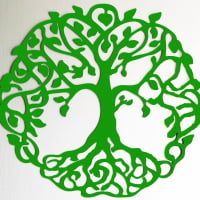Privacy for Living individuals? Where does FamilySearch "draw the line"?
As I have just been reading on another thread, personal details of living persons can be easily added to deceased individuals' IDs. But there seem to be some anomalies here. I'm sure I read a while back that (take in the Life Sketch for a deceased person) the fact that there are still living children and other relatives should not be mentioned: let alone that further, detailed information (about their births, marriages, etc.) should be written.
I can understand why (and agree with the policy) FamilySearch does not allow IDs for the Living to be visible to the public, but it does continue to allow their records to be displayed - in FamilySearch and Family Tree - albeit most of these are publicly available elsewhere.
To clarify - where should users "draw the line" in entering details of living persons in Family Tree - in their attachments (of sources or notes) to deceased persons? For example, why hide the fact (from Life Sketch, etc.) that the deceased individual has three children still alive, and perhaps give further biographical details of them, when:
(1) We can attach census and other records to a deceased person that does not (as in the case of the 1939 National Register for the UK) redact information of living persons.
(2) We cannot even see the fact that a deceased person has living relatives, by looking at their person page or pedigree charts.
Does FamilySearch follow some external guidance here, or adapt its own approach to what is considered to be fair and reasonable (or likely to be legally challenged) in the open display of details of individuals who are still alive?
Best Answer
-
I think FamilySearch leaves that up to the individual poster to make the decision. They suggest that individuals should use judgement in what to post in the life sketch and allow linking of source information that may contain information on living people. These sources usually have been generated from collections that did not originate with FamilySearch but with other entities ( see for example census record - US 1950 will be available in the next year or so and will contain many living records). It is released by the US Government. The present policy of keeping the individual records of living persons hidden except for the creator in Family Tree does have the general restriction of limiting the exposure of personal information regarding living people but as you suggest, it is possible to acquire some of this information from other public records.
Many users complain about the current situation because they would like to share living records with family members. Memories being the most sensitive and the potential loss of memories when someone dies. While I do not believe the current system is perfect, it does appear to me to be reasonable in protecting information for living people but allowing use of all available information. I personally am very cautious in adding information in life sketch that could expose private information of a living person.
2
Answers
-
Family Search has crossed the line on privacy issues. A source was added to a deceased individual, but two individuals on the source are not deceased. I am one of those individuals. I tried to detach the source and am unable to. It is not only bad form to allow sources to be added, but it is an invasion of privacy. The source was NOT added by a family member but by Norman Lee Garrard Ph.D. - FS.Org. I am not impressed with the Ph.D. after the name Norman Lee Garrard's name. The person the source was added to also had a Ph.D. He never would have added a source to an individual which contains living individual's names. What can I do to remove this source immediately?
0 -
@MarilynScottDahneke. what kind of source was it that was added, Public or Private? If it's a Public Source then that information is available to the public whether it is attached to a PID in FS or not. One example would be an obituary that often contains names of living persons.
1
